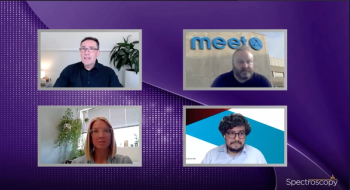
This episode provides expert insights into safely transforming shredded lithium-ion batteries into reusable metals using ICP-OES.

This episode provides expert insights into safely transforming shredded lithium-ion batteries into reusable metals using ICP-OES.

In this episode, panelists consider how advanced elemental analysis of black mass is transforming lithium-ion battery recycling, tackling complex impurities and matrix effects to recover critical materials and support sustainable, closed-loop battery production.

This episode reveals how monitoring elemental impurities, optimizing processes, and managing supply chains can boost battery performance, safety, and sustainability.

In this episode, global experts discuss the challenges and best practices of elemental analysis in lithium-ion battery component manufacturing, focusing on lithium salts, graphite, silicon-carbon composites, and lithium metal oxides, with insights on sample preparation, digestion methods, and advanced ICP-OES techniques to ensure accurate, reliable, and efficient material characterization.

This episode explores the key challenges and best practices in lithium salt analysis during lithium-ion battery component manufacturing, focusing on sample preparation, digestion techniques, and advanced ICP-OES/ICP-MS methods to ensure accurate, reliable elemental quantification of both major and trace impurities.

This episode explores the chemical processing stage of lithium-ion battery production, showing how manufacturers maintain compliance and quality by using ICP-OES and ICP-MS to monitor major and trace elements, implement best practices, and ensure traceability through proper documentation.

In this episode, panelists discuss how real-time monitoring, automation, and data analytics in lithium-ion battery chemical processing improves product quality, operational efficiency, and environmental compliance.

This episode explores how chemical processing turns raw materials into high-purity, battery-grade components while highlighting contamination control, impurity monitoring, and best practices in analytical testing.

In this episode, thought leaders dive deep into discussing how ICP-OES and ICP-MS are used in the mining and refining of lithium-ion batteries to ensure accurate analysis, manage high-TDS samples, and detect ultra-trace elements.

This episode highlights which analytical techniques should be applied during the mining and refining stage to support sustainable production of lithium-ion battery materials.

In this episode, thought leaders discuss the role of elemental analysis during lithium extraction and refining—whether from brines, hard rock, or clays—to identify and manage impurities, optimize concentration and crystallization processes, and maximize yield and material purity for battery production.

This episode highlights the importance of quantifying major elements and trace impurities during mining and refining to safeguard battery performance, support regulatory standards, minimize environmental impact, and enable battery material traceability.

In this episode, a global panel of experts examines how trace elements and material impurities affect lithium-ion battery performance, longevity, and safety, and explores how ICP-OES and ICP-MS applied across the entire value chain—from raw material sourcing to recycling—can optimize first-pass yield, ensure quality control, and support more sustainable manufacturing practices.

In this interview, Yingchan Guo of the University of Florida discusses high-throughput IMS and identifying fatty acyl chains of lipids using mass spectrometry, particularly in matrix-assisted laser desorption ionization (MALDI) imaging.
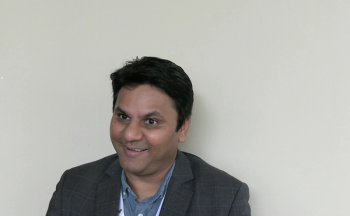
In this interview segment, Prashant Jain, who is a G. L. Clark Professor of Physical Chemistry at the University of Illinois Urbana-Champaign (UIUC), discusses the implications of his study’s findings, highlighting how they advance our understanding of light-driven hydrocarbon formation pathways and plasmonic catalytic events.

Spectroscopy sat down with Renee Romano, a graduate student at The Ohio State University, to discuss the broader implications of her findings, including how they demonstrate the potential of Raman spectroscopy for in situ, real-time monitoring of plant–microbe interactions without destructive sampling.
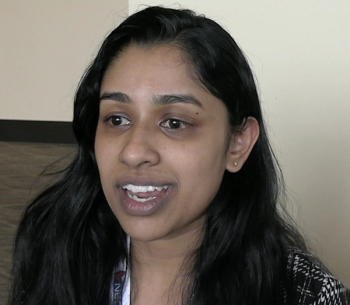
In this exclusive interview, Nishadi Nadeeshani Moragoda Liyanage, a graduate student at The Ohio State University, outlines how the results of her study help advance our understanding of plasmon-induced electron transfer and its applications in nanoscale optoelectronic and catalytic systems.
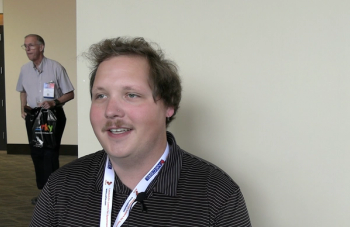
As part of our coverage of the SciX Conference, Spectroscopy sat down with Witte, a graduate student at The Ohio State University, to talk about how machine learning (ML) algorithms can differentiate between spectral features associated with radiation dose and those reflecting temporal changes post-exposure, as well as the benefits of using Raman spectroscopy to detect and quantify radiation-induced molecular changes.
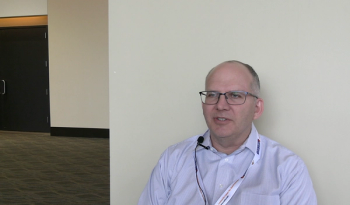
At SciX, Zac Schultz of The Ohio State University sat down with Spectroscopy to discuss his work characterizing molecular interactions with localization microscopy techniques, as well as give his thoughts about how spectrally resolved surface-enhanced Raman spectroscopy (SERS) imaging will impact in vitro cell imaging and other application areas.
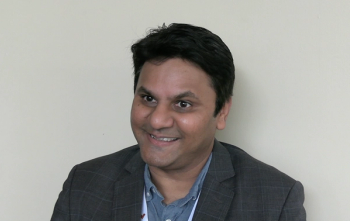
In this interview segment, Prashant Jain of the University of Illinois Urbana-Champaign discusses the unique reaction pathways observed in light-driven chemistry on nanoparticles, particularly in CO2 reduction, and the insights gained into the quantum mechanical mechanisms of these reactions.

In this interview segment, Yingchan Guo previews her talk on Thursday and highlights some of the research projects that are ongoing in the Prentice Research Group at the University of Florida.

In this interview segment, Steven Bell, a professor of physical chemistry at Queen's University Belfast, provides an overview of his talk, and he also outlines what attendees can look forward to at this technical session, highlighting the list of speakers and their research interests.

In this video clip, Fay Nicolson, who is a Research Fellow at the Dana-Farber Cancer Institute and Harvard Medical School, highlights an oral session she is chairing tomorrow that will feature talks about the use of spectroscopy in disease management.

In this interview clip, Yingchan Guo of the University of Florida previews her talk on Tuesday and gives her reaction of the conference thus far.
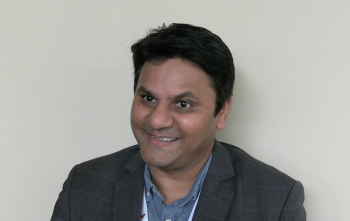
In this interview segment, Prashant K. Jain, a G. L. Clark Professor of Physical Chemistry at the University of Illinois Urbana-Champaign (UIUC), recaps his award plenary talk that he delivered at the SciX Conference this year.

Recently, a team of researchers from Chongqing University (China) developed a new Raman spectroscopy technique that could significantly improve natural gas monitoring and leak detection systems.

As part of our coverage of Analytica USA, Spectroscopy sat down with Ian Ciesniewski, technical director at Mettler Toledo, to discuss the latest changes made to the United States Pharmacopeia (USP) Chapters 41 and 1251. In this interview segment, Ciesniewski discusses how the recent changes to these two chapters will impact organizations.

Besides the technical program, which encompasses plenary talks, poster sessions, short courses, and many contributed oral presentations, SciX also has several social events for attendees to enjoy in the evenings during the conference week. We highlight these social events here.

In the final part of our conversation with Leonardos “Leo” Gkouvelis, we discussed what happens when opposition effects are ignored when studying exoplanets and how it impacts our understanding of their surface composition.

A new review article published in Applied Spectroscopy Reviews highlights how visible–near infrared (Vis-NIR) spectroscopy could improve the way scientists detect and monitor potentially toxic trace elements (PTEs) in soil and sediments.